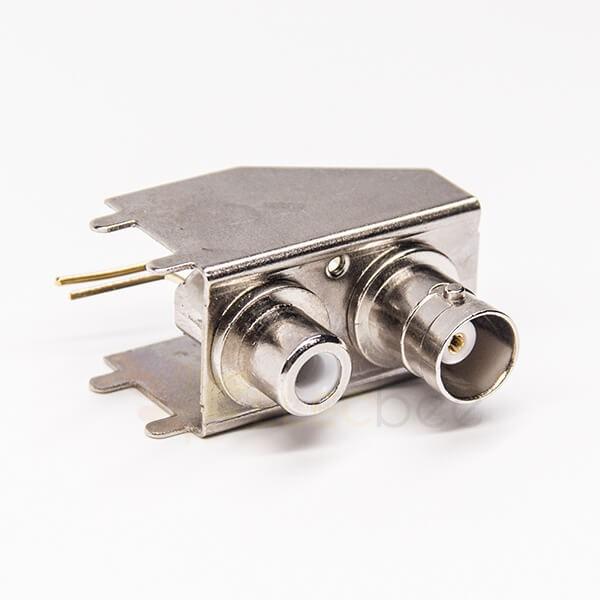BNC connectors are versatile connectors commonly used for coaxial cables and signals, but they can also work for audio and video transmission with some considerations. BNC stands for Bayonet Neill-Concelman, and these connectors provide a secure, water-tight connection for coaxial cables. While originally designed for RF and microwave cables, BNC connectors can function for audio and video signals as well with the proper application.
BNC connectors come in several types, including standard BNC, mini-BNC, and micro-BNC connectors which provide the same coaxial connectivity but with different shell and insert dimensions. For audio and video, the standard BNC connector is typically suitable and available. These connectors provide up to 4 GHz of bandwidth and handle up to 4.5 watts of power, which meets the requirements for most basic audio and video signals.
Some of the specific applications of BNC connectors include:
- CCTV - BNC connectors are commonly used to connect security cameras to monitors or video recorders. They can handle both composite video and HD video signals.
- RF - BNC connectors are widely used to connect RF equipment like antennas, transmitters, receivers, etc. They can handle a wide range of radio frequencies.
- Test equipment - Oscilloscopes, signal generators, and other test gear often use BNC connectors.
- Audio - Although less common, BNC connectors can also be used to carry analog audio signals. They can handle audio signals in the range of a few hertz up to several megahertz.
So BNC connectors are very versatile and work well for most low-power analog audio and video applications due to their wide frequency bandwidth and capability to handle a range of signal types. However, for higher bandwidth digital video signals like 4K, alternative connectors like HDMI are more suitable. For most consumer audio applications also, connectors like RCA or TRS are more popular now. But BNC remains an important professional standard for radio frequency and CCTV installations.

Some key things to keep in mind when using BNC connectors for AV signals:
- Ensure adequate bandwidth - Standard BNC connectors provide bandwidth up to 4 GHz which handles most consumer video formats but may not be ideal for high-speed digital video links. Mini or micro-BNC could work better for higher bandwidth signals.
- Consider signal loss - While BNC connectors have a relatively low loss (around 0.5-0.8 dB), the cumulative loss over longer cable lengths could add up, impacting signal quality. This is important to account for, especially for video signals. Using high-quality, low-loss coaxial cables can help minimize signal loss.
- Match impedances - For the best performance, the impedance of the BNC connectors and coaxial cables should match the source and load impedances. The typical impedance for BNC connectors is 50 ohms, which matches most audio and video equipment. Any impedance mismatches can lead to signal reflections, distortion, and loss of bandwidth.
- Protect from interference - As with any cable, coaxial cables with BNC connectors can potentially pick up electromagnetic interference from nearby cables or devices. Proper shielding techniques like braiding or mesh help shield the signal from interference.
- Consider connector durability - While BNC connectors are rugged, the compression-style connection may loosen over repeated connections and disconnections. For permanent installations or high-flex use, other types of connectors like N connectors could potentially offer more durable connections.
In summary, BNC connectors can work for audio and video signals when the proper considerations around bandwidth, loss, impedance matching, interference, and connector durability are addressed. With high-quality components and secure connectors, BNC can enable both coaxial RF connections as well as AV transmission. By reviewing these key points, BNC connectors can absolutely be deployed for audio and video applications.






